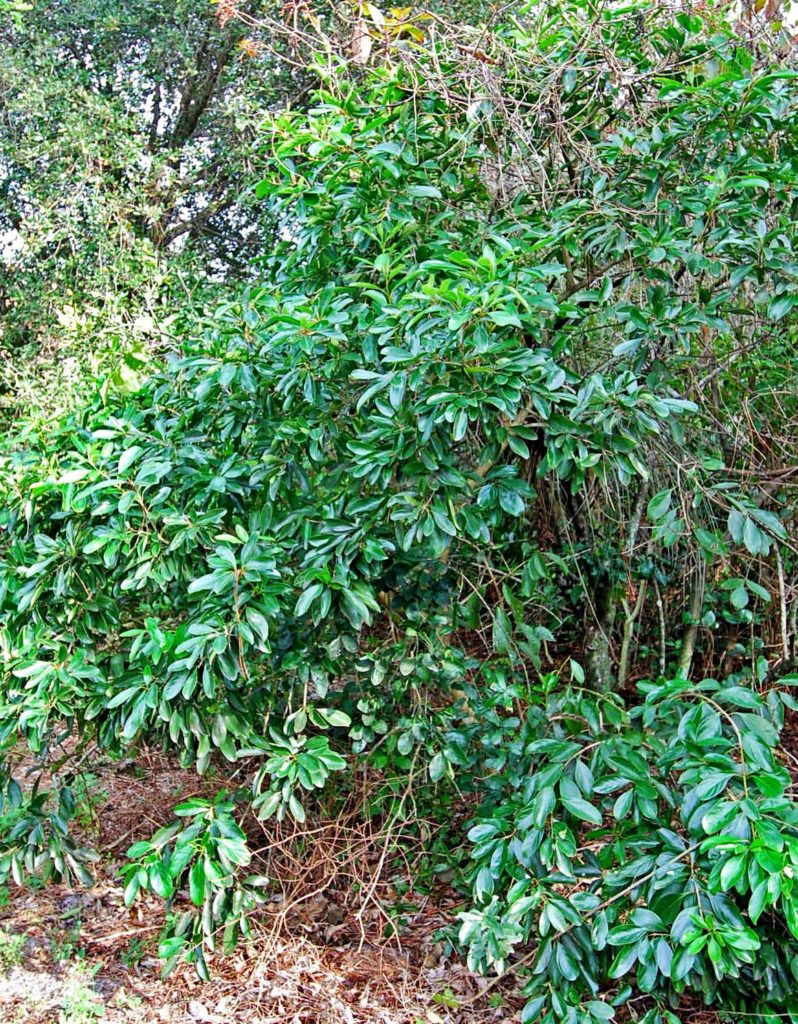
Fiddlewood
Citharexylum spinosum
Fiddlewood is found along the coast from the Upper Keys to Brevard county. It is an arching, medium size shrub along the coast, yet may become a 30 foot tree in protected inland sites. The reddish brown to gray bark becomes furrowed with age.
Fiddlewood is very tolerant of salt air yet is wind sheared along the coast. It can be occasionally attacked by moth larva which shred the leaves and white fly which blacken the plant. The moth larvae become food for wildlife and the plant always grows back. The whitefly may need to be sprayed. If clouds of tiny white insects fly out when the tree is shaken, you have whitefly.
Small dioecious white flowers occur on thin drooping spikes and give off a sweet fragrance. The pea sized berries turn golden when ripe and become dried and black before falling; so no messy berries. Birds eat the fruit and butterflies visit the flowers. The fruit is sweet and edible to humans. When planted inland, use as a small 12 foot tree with a single trunk or prune to make bushy. It can even by planted close to the doorway to provide fragrance as you come and go.
Fiddlewood is one of the most drought tolerant native trees or shrubs that establishes very quickly in average to dry soil. It looks nice coming out of a mass of Saw Palmetto and Beautyberry or mixed with Wild Lime, Firebush, Wild Coffee, Jamaica Caper, Spanish Stopper and other coastal shrubs. It does not make a square hedge though due to its sprawling growth.
Cut to the ground once a year to keep low.